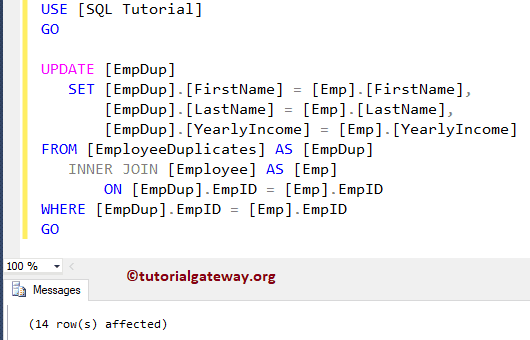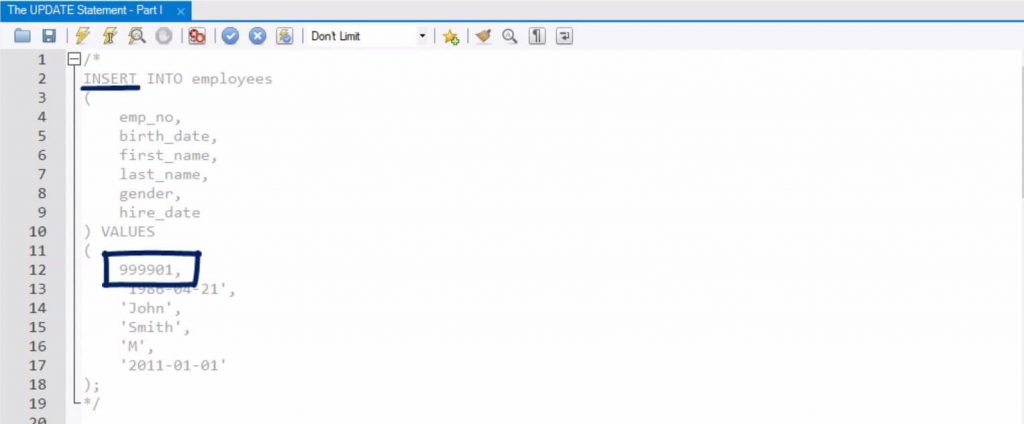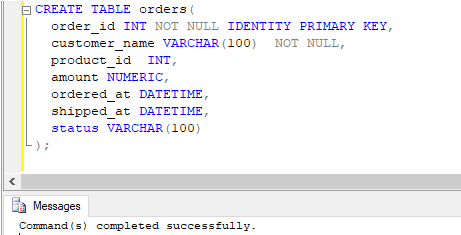

We will take the department table, which we created in the Insert command section.
PSQL UPDATE UPDATE
And this expression returns true only for rows.įor our better understanding, we will see examples of PostgreSQL Update command. It is an expression, which is used to return a value of type Boolean. We will use the WHERE clause to filter the records and fetch only the essential records. Move your cursor over the option scripts. We can use the comma (,) to separate every pair of the column and values. UPDATE Query in PostgreSQL Right-click on the selected table. It is used to describe a column's name in a table whose values need to be modified in the SET clause. It is a keyword, which is used to update the rows of a table.Īfter the UPDATE clause, we will use this parameter to define the table name to update the data. In other words, I overrode the value that the identity column was going to generate and I inserted my own.We have the following parameters, which are used in the above syntax: Parameters Now let’s insert a new value using OVERRIDING SYSTEM VALUE: INSERT INTO Idiots ( IdiotId, IdiotName ) This might be an option if you’re unable to alter the table like we did in the previous example.įirst, let’s alter the identity column back to use our original GENERATED ALWAYS: ALTER TABLE IdiotsĪLTER COLUMN IdiotId SET GENERATED ALWAYS
PSQL UPDATE PASSWORD
Then in the psql console, change the password and quit: postgres \password postgres Enter new password:PSQL UPDATE ARCHIVE
Therefore, another option available to us is to insert a new value altogether using the OVERRIDING SYSTEM VALUE in the INSERT statement. PostgreSQL is available for download as ready-to-use packages or installers for various platforms, as well as a source code archive if you want to build it yourself. To change the PostgreSQL user's password, follow these steps: log in into the psql console: sudo -u postgres psql. In particular, when using the INSERT statement, PostgreSQL provides us with the OVERRIDING SYSTEM VALUE option.

When a column has been created with the GENERATED ALWAYS option, we have more flexibility when inserting data (as opposed to updating existing data). Now we can insert our preferred value into the identity column: UPDATE Idiots Solution 2Īnother solution is to alter the column so that it’s defined using the GENERATED BY DEFAULT option: ALTER TABLE IdiotsĪLTER COLUMN IdiotId SET GENERATED BY DEFAULT The system generated its own value for the identity column. One solution to this issue is to set the column to DEFAULT: UPDATE Idiots When this option is selected, the only value we can use to update the column is DEFAULT. I got that error because the IdiotId column was defined as GENERATED ALWAYS when it was created.

You can apply WHERE condition to apply UPDATE only on those values that satisfy the. Result: ERROR: column "idiotid" can only be updated to DEFAULTĭETAIL: Column "idiotid" is an identity column defined as GENERATED ALWAYS. If the WHERE clause is omitted, an UPDATE statement will modify each of the values within the entire specified column. PostgreSQL UPDATE query is used to update column values of a table. Use of RETURNING avoids performing an extra database query to collect the data, and is especially valuable when it. The INSERT, UPDATE, and DELETE commands all have an optional RETURNING clause that supports this. Here’s an example of code that produces the error: UPDATE Idiots Sometimes it is useful to obtain data from modified rows while they are being manipulated. So to fix this issue, either use DEFAULT as the new value, or alter the column to use the GENERATED AS DEFAULT option.Īnother option is to insert a new row and use the OVERRIDING SYSTEM VALUE option in the insert statement. When an identity column was created with the GENERATED ALWAYS option, we can only use DEFAULT when updating that column. For MySQL, a callable to update columns b and c if theres a conflict on a primary key. If you’re getting an error in PostgreSQL that tells you that a column “…c an only be updated to DEFAULT” with detail that explains that it “ …is an identity column defined as GENERATED ALWAYS“, it’s probably because you’re trying to update an identity column with your own value, but the identity column was created with the GENERATED ALWAYS option.


 0 kommentar(er)
0 kommentar(er)
